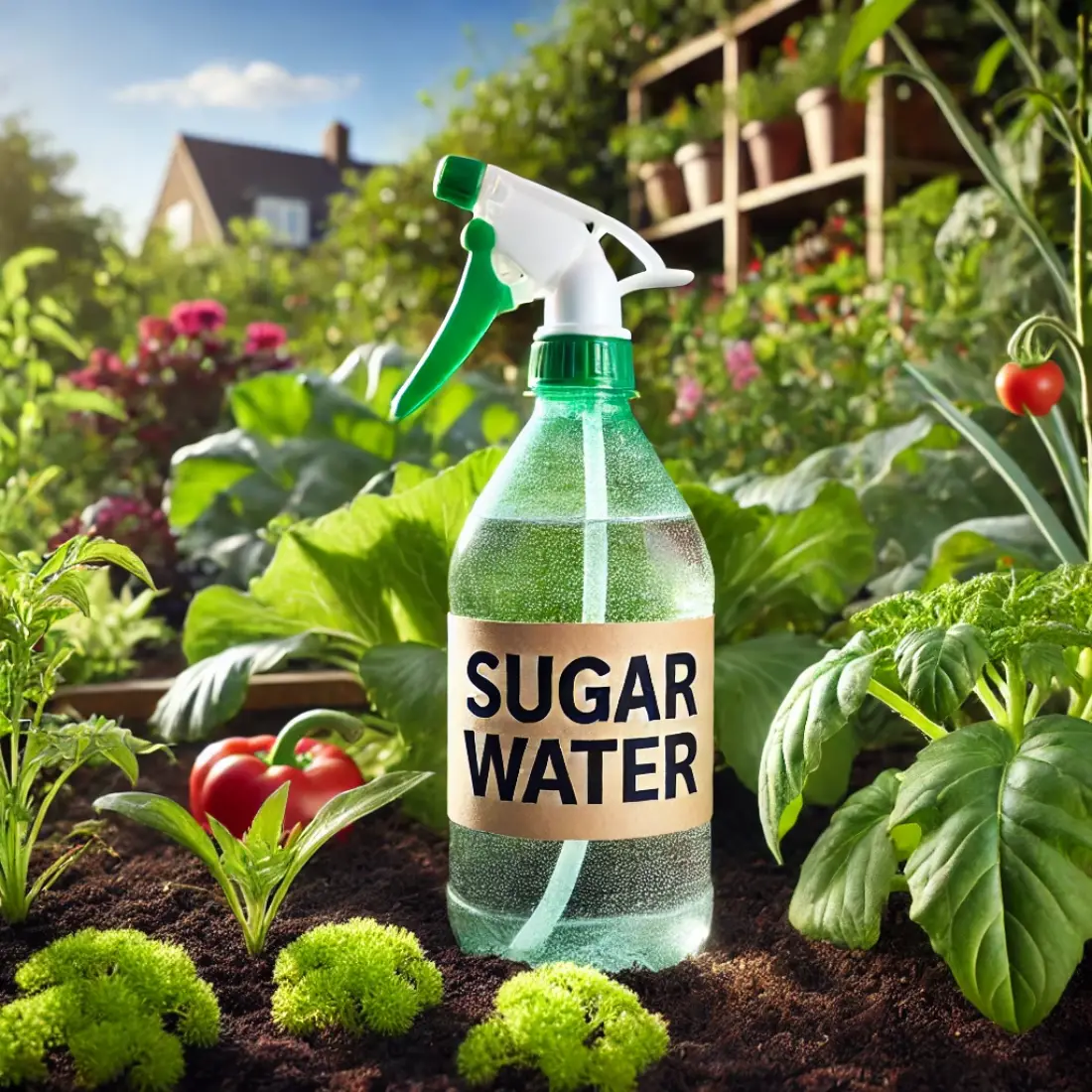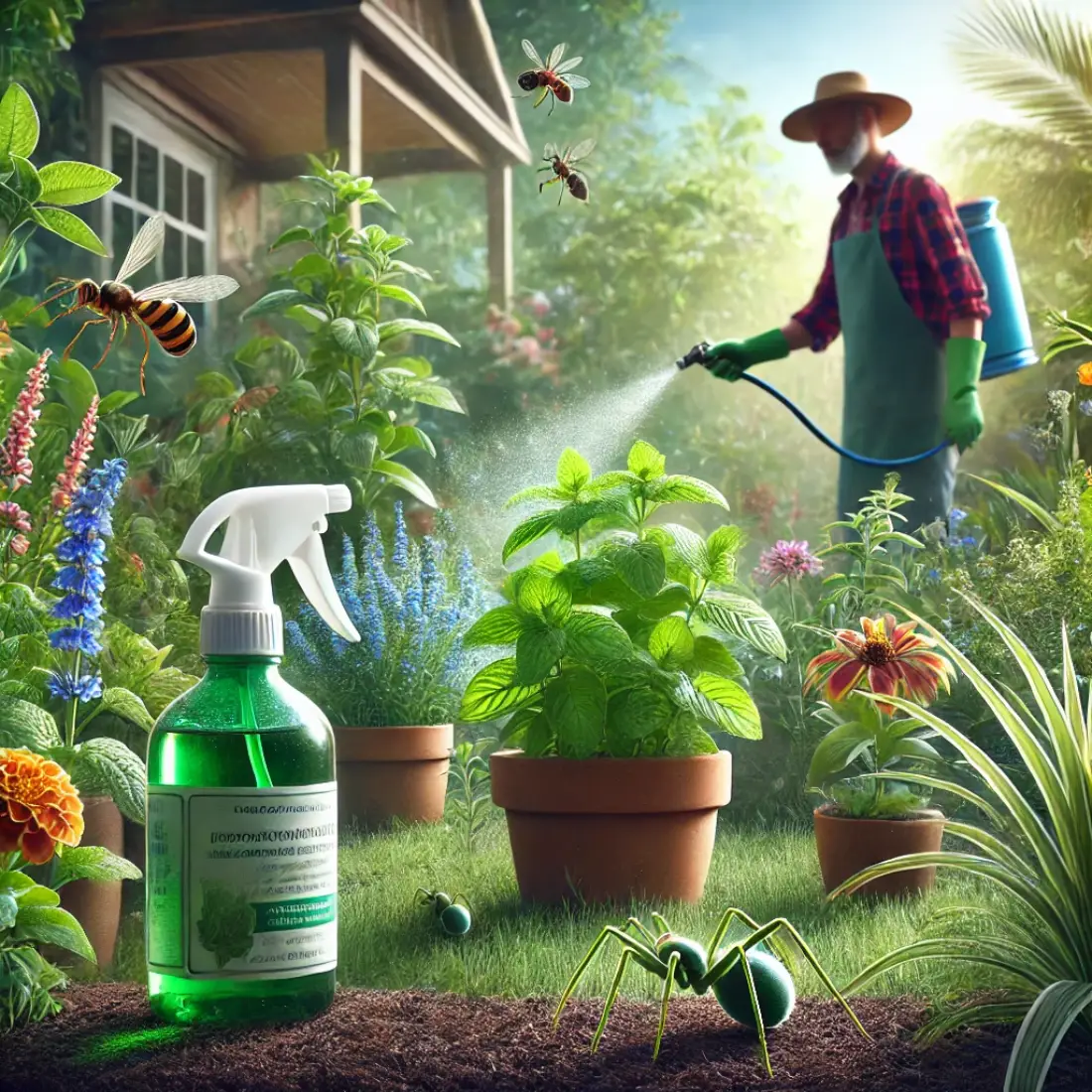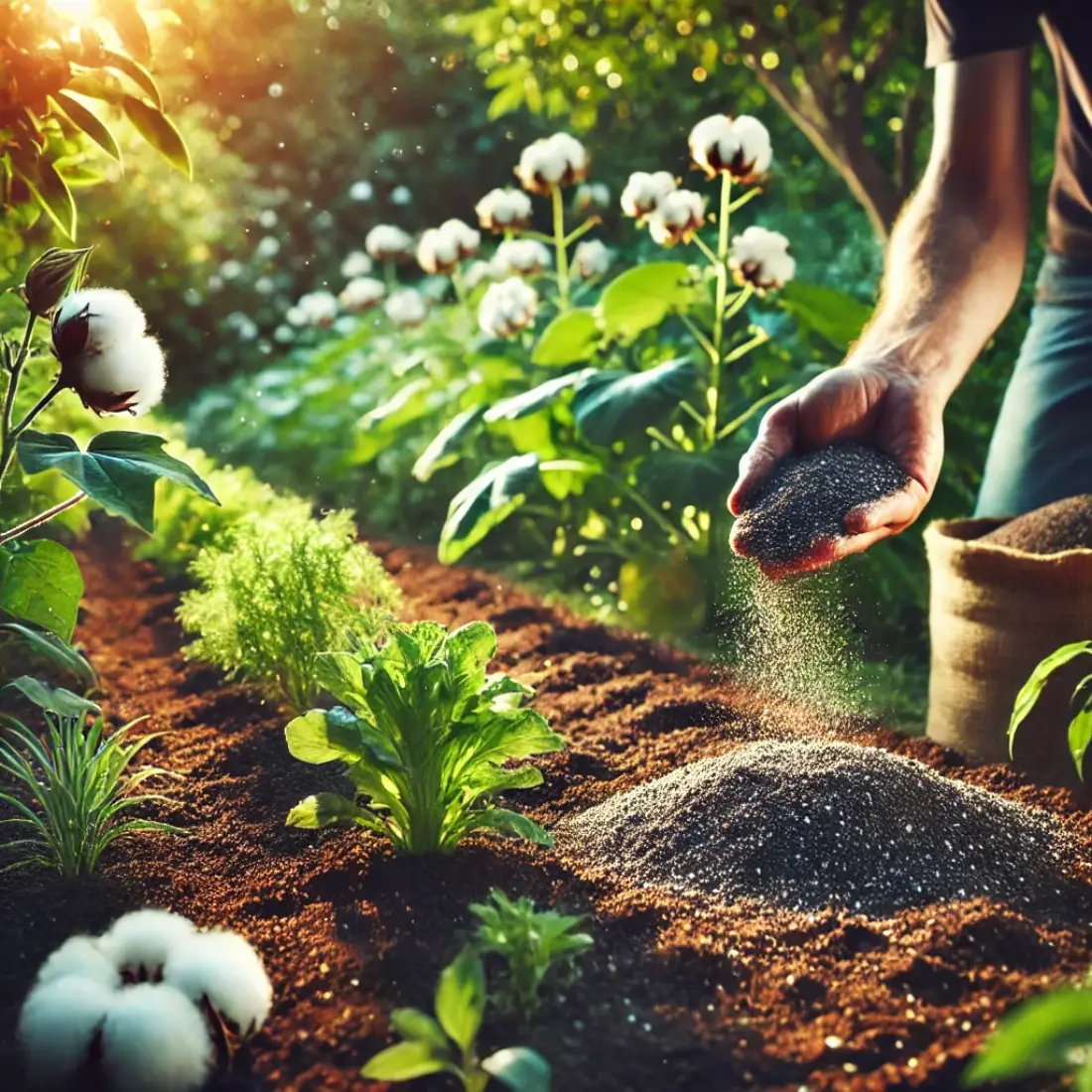Molasses is more than just a sweet syrup, it’s a potent fertilizer that can enrich your garden soil. This versatile substance is gaining popularity among organic gardeners for its ability to enhance soil health and promote robust plant growth.
Molasses is a byproduct of the sugar-making process, typically derived from sugar cane or sugar beets. When sugar cane or sugar beets are processed to extract sugar, the remaining syrup is called molasses. This thick, dark syrup contains a variety of nutrients and minerals, making it valuable not only in cooking and baking but also as a natural fertilizer for plants.
- Molasses can significantly enhance soil health.
- It’s an effective natural fertilizer.
- Molasses helps boost microbial activity in soil.
- It is environmentally friendly and cost-effective.
Nutrient Content in Molasses
Molasses is packed with essential nutrients that plants need to thrive. These nutrients include:
- Calcium: Vital for cell wall structure and root development.
- Magnesium: Key component of chlorophyll, necessary for photosynthesis.
- Potassium: Regulates water uptake and enzyme activation.
- Iron: Essential for chlorophyll synthesis and energy transfer.
- Manganese: Involved in photosynthesis and nitrogen metabolism.
- Copper: Important for reproductive growth and disease resistance.
The presence of these nutrients in molasses helps replenish depleted soils, providing plants with a balanced supply of vital elements.
Enhancing Soil Microbial Activity
One of the primary benefits of using molasses as a fertilizer is its ability to enhance soil microbial activity. The sugars in molasses serve as an excellent food source for beneficial microbes, such as bacteria and fungi, which play a crucial role in soil health.
Microbial Stimulation:
- Molasses provides simple sugars that are easily digestible by soil microbes.
- These sugars boost microbial populations, leading to increased microbial activity.
Nutrient Cycling:
- Active microbes break down organic matter more efficiently, releasing nutrients into the soil.
- This process, known as nutrient cycling, makes essential nutrients more available to plants.
Improved Soil Structure:
- Increased microbial activity enhances the formation of soil aggregates.
- Better soil structure improves water retention, aeration, and root penetration.
Disease Suppression:
- Healthy microbial populations can outcompete harmful pathogens.
- This natural suppression of soil-borne diseases helps protect plant health.
By promoting a thriving microbial ecosystem, molasses not only enriches the soil but also supports robust plant growth and resilience.
How to Apply Molasses to Your Garden
Applying molasses as a fertilizer to your garden can be done in several ways, each tailored to different gardening needs.
Types of Molasses Application
Foliar Spray:
- Method: Dilute molasses in water and spray directly onto the plant leaves.
- Benefits: Allows for quick nutrient absorption through the leaves, providing a fast nutrient boost.
- Ideal For: Quick corrections of nutrient deficiencies and promoting healthy foliage.
Soil Drench:
- Method: Mix molasses with water and apply directly to the soil around the base of the plants.
- Benefits: Enhances soil microbial activity and improves nutrient availability in the root zone.
- Ideal For: Long-term soil health improvement and deep nutrient penetration.
Step-by-Step Application Guide
Foliar Spray:
- Mix 1-2 tablespoons of molasses with 1 gallon of water.
- Stir well to ensure the molasses is fully dissolved.
- Pour the solution into a garden sprayer.
Soil Drench:
- Combine 1/4 cup of molasses with 1 gallon of water.
- Mix thoroughly until the molasses is completely dissolved.
Application Process:
Foliar Spray:
- Apply the molasses solution to the leaves of the plants, ensuring thorough coverage.
- Spray in the early morning or late afternoon to prevent leaf burn from the sun.
- Repeat every 2-4 weeks or as needed.
Soil Drench:
- Water the soil around the plants with the molasses solution.
- Ensure even distribution to cover the entire root zone.
- Apply every 4-6 weeks or as needed, depending on soil health and plant needs.
Precautions and Best Practices:
Avoid Overapplication: Too much molasses can lead to microbial imbalances and potential plant stress. Stick to recommended dilution ratios and application frequencies.
Monitor Plant Response: Observe plants for any signs of nutrient burn or over-fertilization. Adjust application rates and frequencies based on plant health and growth.
Complement with Other Fertilizers: Molasses can be used alongside other organic fertilizers for a balanced nutrient supply. Avoid using synthetic fertilizers that may disrupt soil microbial activity.
Additional Tips for Using Molasses
Using molasses as a fertilizer can greatly benefit your garden, but there are additional methods and tips that can enhance its effectiveness. Here are some valuable insights and techniques to maximize the benefits of molasses in your gardening routine.
Combining Molasses with Compost Tea
Enhancing compost tea with molasses is a great way to boost its effectiveness. To do this, brew compost tea using a mix of compost and water. Add 1-2 tablespoons of molasses per gallon of tea during the brewing process.
Molasses provides an additional food source for beneficial microbes in the compost tea, enhancing microbial diversity and activity, resulting in a more potent fertilizer. You can use the enriched compost tea as a foliar spray or soil drench, applying it every 2-4 weeks for optimal results.
Using Molasses in Hydroponics
Molasses can also be used in hydroponic systems, though it should be diluted properly. When added to hydroponic nutrient solutions, molasses provides essential nutrients and boosts microbial activity even in soilless growing mediums.
To use molasses in hydroponics, dilute 1 teaspoon of molasses per gallon of water in your hydroponic nutrient solution. Use this enriched solution once a month to avoid clogging and over-feeding the plants.
Seasonal Use and Soil Preparation
Timing your molasses applications can further enhance its benefits. In the spring, apply molasses at the beginning of the growing season to boost soil microbial activity. In the fall, use molasses to help decompose organic matter and prepare the soil for the next planting season.
For soil preparation, mix molasses into the soil before planting to improve soil structure and nutrient availability. For existing gardens, apply molasses as a side dressing to established plants for an ongoing nutrient boost.
Monitoring and Adjusting Application
Observing plant response is crucial when using molasses. Look for signs of improvement such as enhanced plant vigor, deeper green foliage, and improved flowering and fruiting. Conversely, yellowing leaves or slowed growth may indicate overuse of molasses or nutrient imbalance.
To avoid this, start with lower concentrations of molasses and gradually increase based on plant response. Different plants may require different application frequencies and concentrations, so adjust your approach accordingly.
Signs of Overuse and How to Avoid It
While molasses is a beneficial natural fertilizer, overusing it can lead to issues in your garden. Here are some signs of overuse and tips on how to avoid them to ensure your plants thrive.
Signs of Overuse
- Yellowing Leaves: One of the first signs of nutrient imbalance is yellowing leaves. Excessive molasses can disrupt the balance of nutrients, leading to deficiencies, particularly in nitrogen.
- Slowed Growth: Plants may stop growing or grow more slowly if they are overfed. Overfeeding can stress plants and inhibit their development.
- Root Rot: Roots may become mushy and discolored, a clear indicator of root rot. Excess molasses can increase moisture retention, leading to overly wet conditions that promote root rot.
- Unpleasant Odors: A foul smell emanating from the soil can indicate overabundant microbial activity. This can lead to anaerobic conditions and the production of unpleasant odors.
- Mold or Fungal Growth: Visible mold or fungi on the soil surface is another sign of overuse. Excess sugars in molasses can feed not only beneficial microbes but also harmful fungi.
How to Avoid Overuse
- Start with Small Amounts: Begin by using lower concentrations of molasses. For instance, use 1 tablespoon of molasses per gallon of water rather than a higher amount.
- Monitor Plant Health: Regularly check plants for signs of stress or nutrient imbalances. Look for changes in leaf color, growth patterns, and overall vigor.
- Adjust Application Frequency: Space out molasses applications to prevent buildup. Apply molasses every 4-6 weeks instead of more frequently.
- Use Dilution Ratios: Follow recommended dilution ratios for foliar sprays and soil drenches. For a soil drench, mix 1/4 cup of molasses with 1 gallon of water.
- Combine with Other Fertilizers: Use molasses in conjunction with other organic fertilizers to balance nutrient supply. Pair molasses with compost or worm castings to provide a broader range of nutrients.
- Maintain Soil Aeration: Ensure good soil aeration to prevent anaerobic conditions. Regularly aerate the soil by tilling or using a garden fork.
- Avoid Wet Conditions: Be mindful of soil moisture levels when applying molasses. Apply molasses solutions when the soil is moderately dry, not waterlogged.
FAQs about Using Molasses as a Fertilizer
Can molasses attract pests to my garden?
Molasses can attract pests like ants or flies if not used correctly. To minimize this risk, apply molasses solutions early in the morning or late in the afternoon when insect activity is lower. Additionally, ensure proper dilution and avoid overapplication to prevent attracting unwanted pests.
How often should I use molasses in my garden?
For most plants, using molasses every 4-6 weeks is sufficient. This frequency allows for sustained nutrient and microbial benefits without overwhelming the soil. Adjust based on plant response and specific garden needs.
Is molasses suitable for all types of plants?
Molasses is generally safe for a wide variety of plants, including vegetables, fruits, flowers, and shrubs. However, it is always best to test on a small area or a few plants first to ensure there are no adverse reactions.
Can I combine molasses with other fertilizers?
Yes, molasses can be combined with other organic fertilizers like compost, worm castings, or compost tea. This combination provides a balanced supply of nutrients and enhances soil health.
What type of molasses is best for gardening?
Blackstrap molasses is often recommended for gardening because it contains the highest concentration of nutrients. Unsulfured molasses is also a good choice as it is free from added chemicals.
How do I apply molasses as a foliar spray?
To apply molasses as a foliar spray, mix 1-2 tablespoons of molasses with 1 gallon of water. Spray the solution on the leaves of plants in the early morning or late afternoon to avoid sunburn and maximize absorption.
Can using too much molasses harm my plants?
Yes, overusing molasses can lead to nutrient imbalances, root rot, and increased fungal growth. Signs of overuse include yellowing leaves, slowed growth, and unpleasant odors. Follow recommended dilution rates and application frequencies to avoid these issues.
Can molasses improve soil structure?
Yes, molasses can improve soil structure by enhancing microbial activity. Increased microbial activity helps form soil aggregates, improving water retention, aeration, and root penetration.
Is molasses environmentally friendly?
Molasses is an environmentally friendly and sustainable alternative to chemical fertilizers. It is a natural byproduct of sugar production and helps reduce the need for synthetic fertilizers.
Can I use molasses in hydroponic systems?
Molasses can be used in hydroponic systems but should be diluted properly. Use 1 teaspoon of molasses per gallon of water in your hydroponic nutrient solution and apply it once a month to avoid clogging and over-feeding plants.













